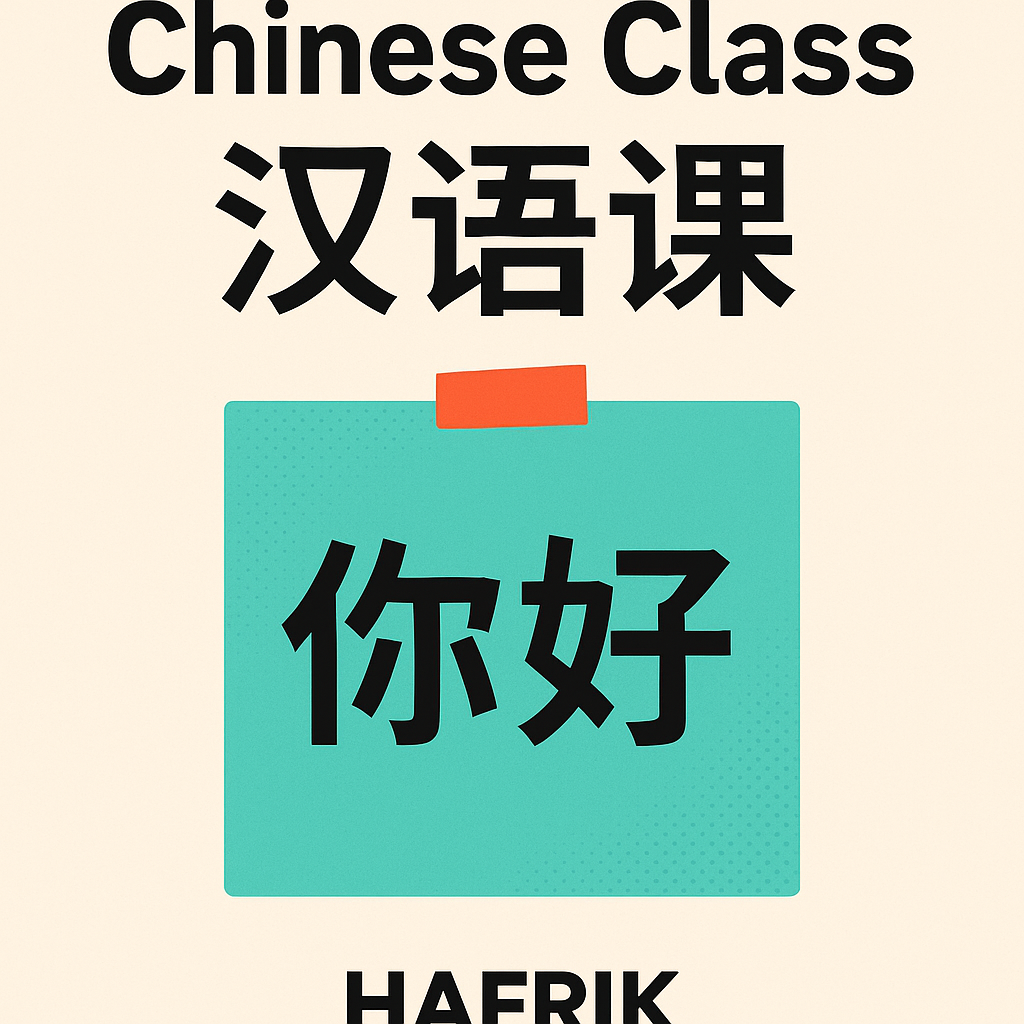Just as important as saying hello is knowing how to say goodbye. In Chinese, the most common phrase is 再见 (Zàijiàn), which literally means “see you again.”
👋 Common Ways to Say Goodbye
- 再见 (Zàijiàn) — Goodbye / See you again
- 拜拜 (Bàibài) — Bye-bye (casual, borrowed from English)
- 回头见 (Huítóu jiàn) — See you later
- 明天见 (Míngtiān jiàn) — See you tomorrow
📌 Tip: Adding “见 (jiàn)” makes it easy to say “see you [time].” Example: 周末见 (Zhōumò jiàn) — See you this weekend.
Hafrik Chinese Class – Learn a new word every day.
Chinese Class: Lesson 4 — Thank You (谢谢 Xièxiè)
Gratitude is powerful in any culture. In Chinese, the most common way to say thank you is 谢谢 (Xièxiè).
🙏 How to Use 谢谢
- When someone gives you something → 谢谢!
- When someone helps you → 谢谢!
- When leaving a shop or restaurant → 谢谢!
Replying to 谢谢
- 不客气 (Bú kèqi) — You’re welcome
- 没事 (Méishì) — No problem
- 应该的 (Yīnggāi de) — It’s my duty / Of course
Hafrik Chinese Class – Learn a new word every day.
Chinese Class: Lesson 5 — Yes & No (是 Shì / 不是 Bùshì)
Saying yes and no in Chinese is simpler than you think. The words are linked to the verb. The basic “yes” is 是 (Shì), and “no” is 不是 (Bù shì).
✅ Examples
- 你是老师吗? (Nǐ shì lǎoshī ma?) — Are you a teacher?
✔ 是 (Shì) — Yes
❌ 不是 (Bù shì) — No
- 你喜欢中国菜吗? (Nǐ xǐhuan Zhōngguó cài ma?) — Do you like Chinese food?
✔ 喜欢 (Xǐhuan) — Yes
❌ 不喜欢 (Bù xǐhuan) — No
📌 Tip: In Chinese, you often repeat the verb with or without 不 to answer questions.
Hafrik Chinese Class – Learn a new word every day.
Chinese Class: Lesson 6 — Numbers 1 to 10 (数字 Shùzì)
Numbers are essential in daily life, from ordering food to paying bills. Here are the first ten numbers in Chinese.
🔢 Numbers 1–10
- 一 (Yī) — 1
- 二 (Èr) — 2
- 三 (Sān) — 3
- 四 (Sì) — 4
- 五 (Wǔ) — 5
- 六 (Liù) — 6
- 七 (Qī) — 7
- 八 (Bā) — 8
- 九 (Jiǔ) — 9
- 十 (Shí) — 10
📌 Tip: Numbers are also shown with hand gestures in China. For example, a single finger for 1, a “V” sign for 2, etc.
Hafrik Chinese Class – Learn a new word every day.




